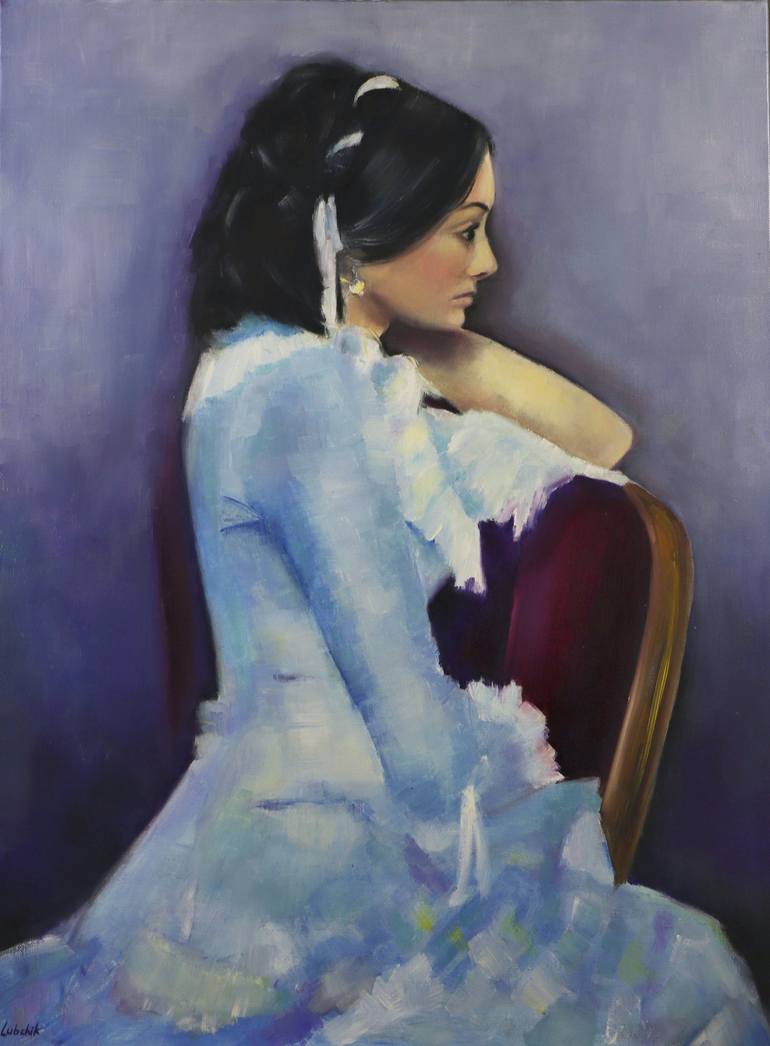Figurative Oil Painting: From Principle to Canvas - A Step-by-Step Technique
Figurative Oil Painting: From Principle to Canvas - A Step-by-Step Technique
Blog Article
The Duty of Feeling and Expression in Metaphorical Oil Painting: An In-Depth Analysis of Subject and Structure
The interaction of emotion and expression in metaphorical oil paint offers as a vital lens with which one can analyze the detailed partnership between subject matter and composition. Artists harness numerous strategies, from shade option to brushstroke characteristics, to cultivate psychological vibration within their jobs.
Recognizing Feeling in Art
Feeling in art offers as a powerful conduit for expression, permitting artists to convey complex sensations through their job. In metaphorical oil painting, this psychological deepness is often portrayed via the depiction of the human number, capturing the nuances of human experience. The choice of subject, shade palette, and brushwork all add to the emotional resonance of a piece.
Artists regularly attract upon individual experiences, societal problems, or universal styles to stimulate feelings in the audience. For instance, a picture might mirror susceptability, while a dynamic figure in activity can represent flexibility or turmoil. These psychological strings link the customer to the art work, fostering a discussion that transcends the visual tool.
In addition, the interplay between light and darkness can amplify emotional strength, directing the customer's look and drawing attention to specific components within the structure. Using appearance in oil painting further includes layers of intricacy, inviting a responsive feedback that boosts the psychological experience. Overall, comprehending feeling in art is crucial for valuing the nuances that define figurative oil painting, as it changes simple depiction into a profound expedition of the human problem.
Secret Components of Composition
In the world of metaphorical oil paint, the make-up works as the underlying framework that arranges aesthetic aspects and improves the psychological story. Vital components of structure consist of equilibrium, comparison, focal factor, and rhythm, each contributing to the general impact of the artwork.
Equilibrium refers to the circulation of visual weight within the painting, which can be achieved with asymmetrical or in proportion plans. A healthy make-up provides security, allowing the visitor to engage with the item harmoniously - figurative oil painting. Contrast, on the other hand, includes juxtaposing various aspects, such as dark and light or warm and trendy shades, to guide the audience's eye and evoke psychological feedbacks
The focal point is crucial, as it routes interest to the most significant component of the paint, often highlighting the psychological core of the story. By skillfully incorporating these essential aspects, musicians can craft emotionally resonant and engaging metaphorical oil paints that captivate and engage their audience.
Subject Matter and Its Impact
Subject plays an essential duty in figurative oil paint, as it not only works as the foundation for the narrative but also shapes the viewer's interpretation and psychological involvement with the artwork. The selection of topic-- be it a solitary figure, a group dynamic, or a thematic representation-- straight influences the psychological environment communicated to the target market.

For circumstances, pictures frequently evoke personal links, exposing the details of human expression and personality, while scenes illustrating common activities can produce a feeling of belonging or fond memories. Moreover, the social and historical context of the topic improves the customer's understanding, triggering much deeper reflections on societal norms, worths, and the human condition.
Various topics additionally generate differing degrees of engagement; a dramatic conflict portrayed official source through numbers in stress might generate feelings of anxiety or compassion, while peaceful landscapes can conjure up peace and consideration. Eventually, the influence of topic in figurative oil painting is profound, as it works as a conduit for emotional resonance, assisting the visitor's feedback and analysis, and fostering a connection in between the art work and the viewer. This interaction is necessary for the effective communication of the musician's intent.
Methods for Evoking Feelings
The efficiency of figurative oil paint in sharing feelings is considerably influenced by the techniques used by the musician. One of one of the most vital techniques is making use of shade concept, where the tactical option of tones can stimulate particular psychological actions. Warm shades, such as reds and oranges, typically generate feelings of interest or hostility, while cooler tones like blues and environment-friendlies have a tendency to stimulate peace or despair.
Another necessary technique is the control of light and shadow, referred to as chiaroscuro. This approach boosts the three-dimensionality of numbers, producing dramatic contrasts that can increase psychological depth. The positioning of light can assist audiences' feelings, highlighting certain elements of the make-up.
Brushwork additionally plays a learn the facts here now crucial function; loose, meaningful strokes can share power and spontaneity, whereas smoother strategies may recommend serenity or accuracy. The setup of topics within the make-up can influence psychological influence. Close distance can suggest intimacy, while distance might suggest seclusion.
Eventually, the combination of these strategies allows artists to craft stories that resonate with the viewer, changing a plain aesthetic experience into an expressive emotional trip. - figurative oil painting

Instance Studies of Significant Works
Checking out noteworthy works of figurative oil painting exposes exactly how numerous methods are utilized to evoke powerful feelings. One excellent situation is Edvard Munch's "The Scream," where the altered number and swirling background share existential dread. Munch's use color-- vibrant oranges and deep blues-- intensifies the psychological effect, showcasing how scheme choices can form viewer experience.
One more significant work is Pablo Picasso's "Les Demoiselles d'Avignon." Below, bold brushstrokes and fragmented forms mirror a troubled psychological landscape, testing conventional depictions of the female number. Picasso's cutting-edge composition not only records the viewer's attention however also welcomes contemplation on themes of identification and sexuality.
In Addition, Frida Kahlo's "The 2 Fridas" offers a poignant expedition of duality and self-identity. The contrasting figures, linked by a shared heart, exemplify Kahlo's emotional deepness and personal story. figurative oil painting. Her careful interest to detail and symbolic components offer to involve viewers on a visceral level
These situation studies emphasize the profound connection between emotion and make-up in figurative oil painting, disclosing how artists harness strategy to communicate complicated sensations and narratives that resonate throughout time and culture.

Verdict
To conclude, the interaction of emotion and expression in metaphorical oil painting check these guys out substantially improves the audience's experience and interpretation of the artwork. With a mindful choice of subject matter and compositional methods, musicians convey extensive narratives that resonate on both global and personal levels. The application of color brushwork, chiaroscuro, and concept further magnifies emotional deepness, changing each canvas into an effective reflection of the complexities of the human experience.
In figurative oil painting, this emotional deepness is often represented via the representation of the human number, capturing the nuances of human experience.Additionally, the interplay in between light and darkness can magnify psychological intensity, assisting the customer's stare and drawing attention to particular components within the make-up. The usage of structure in oil paint better includes layers of complexity, inviting a tactile feedback that enhances the psychological experience.The focal factor is critical, as it directs attention to the most significant part of the painting, usually highlighting the emotional core of the story. Ultimately, the impact of subject matter in figurative oil paint is extensive, as it offers as a channel for psychological vibration, directing the viewer's response and analysis, and promoting a connection between the artwork and the viewer.
Report this page